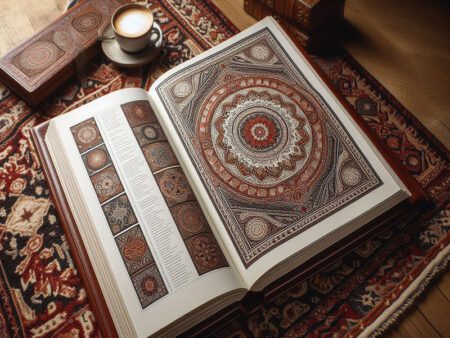
VERNA CARPET – Redesign by Parsineweb





Showing all 17 results
The Kurds are an Iranian ethnic group that, according to historians, lived in the Kurdistan region before the birth of Christ and today has a population of nearly 12-13 million people. Kurdistan is a province in western Iran that shares borders with some provinces of Iran. In addition to a large area in western Iran, the Kurdish people also live in Turkey, Iraq, and Kazakhstan. The lifestyle of the Kurdish people in Iran was in the past as a nomadic animal husbandry and life, but over time they switched to a rural life and wheat and barley cultivation, and eventually to urban life and trade.
There are no exact statistics on the beginning of rug weaving in this region, but experts estimate the age of Kurdish rugs to be more than 400 years. The presence of rugs from the Qajar period in the National carpet Museum of Iran also indicates the age of Kurdish area rugs.
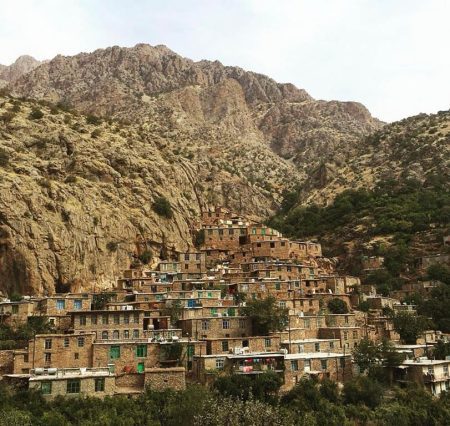
Kurdistan, Iran
Due to the favorable climatic conditions of Kurdistan; this region has long been one of the main livestock breeding areas of Iran and due to the easy access to high-quality wool, they are among the first regions to turn to handmade rug and rug weaving. Kurdish women have continued the tradition of rug weaving from generation to generation and created wonderful rugs that depict the independent spirit and flexibility of the Kurdish people. The designs of Persian Kurdish rugs well reflect the winding and difficult-to-reach region of Kurdistan.
Kurdish Persian rugs were initially woven according to nomadic styles, but with the establishment of rug weaving workshops, the production of exquisite rugs for export also began. It is interesting to know that the Sanandaj kilim is one of the best kilims in Iran, which is 400 years old. Rug weaving in this province has increased greatly since about 100 years ago. The diversity of weaving in Kurdish regions has led to the creation of a number of different weaving regions. In Kurdistan Province, weavers from each region weave rugs with specific characteristics of that region and their products are not similar in any way. In each region, you can see a wide variety of rugs, But all old Kurdish rugs, regardless of which region they were woven in, have a symmetrical (Turkish) knot. This is the only common point of rugs from all Kurdish regions. If you are interested in buying Iranian Kurdish rugs, it is better to familiarize yourself with their characteristics.

Kurdish woman
Please read more about: 3 Types of Iranian Carpet Weaving Methods
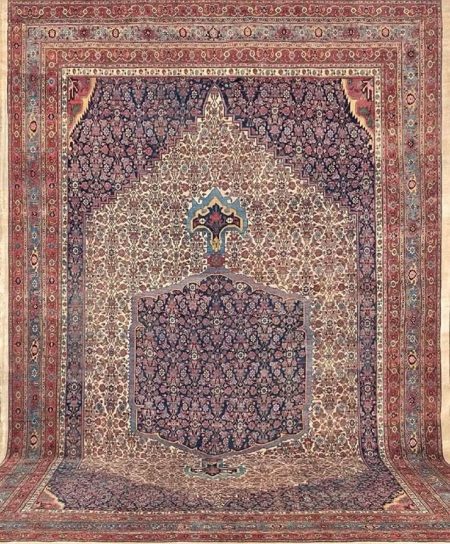
Bijar rug
The mountainous regions of Kurdistan have led weavers in this region to use symbols of nature in their carpets and other handicrafts. Kurdish carpet symbols express the beliefs, customs and traditions of these regions. Northern Kurdistan rugs are inspired by Zanjan rugs and Azerbaijan rugs, while southern Kurdistan rugs are influenced by carpets from Hamedan rugs and Kermanshah. Some motifs (such as Golestan, Baghi) evoke a thousand-year history. As we said, Kurdistan province is one of the important areas for livestock farming due to its favorable climate. The wool used for carpets is hand-spun and of high quality. The city of Sanandaj is one of the centers of production of hand-spun wool in Iran. In general, Kurdish carpets are divided into three categories: Bijar(Bidjar) or Garous, Senneh rugs and nomadic.
The city of Bijar is located in western Kurdistan, which was previously called Garous. The Bijar rug or Garous rug is known as the iron rug. The reason why the Bijar rug is called the iron rug is because of the wefts that pass through it. In the Bijar rug, two thin and thick wefts are used between the rows, although in the past, 3-4 types of wefts were used. The wefts used in the Bijar rug were wool. Due to the elasticity of the wool, the comb was beaten hard to achieve compression, which made these rugs thick and stiff. These carpets were so stiff that it was difficult to fold and roll them.
You can read about these kind of Kurdish rugs:
https://vernacarpets.com/product-category/handmade-carpets/kurdistan/bijar/
It is interesting to know that the number of wefts does not affect the quality of the carpet and only makes it stiffer. Also, due to the dense pile, contaminants have less chance of entering the carpet, which is why these carpets get dirty slowly. Bijar rugs are woven in almost all sizes and with long piles, and since the Bijar people are from the Turkish ethnic groups of Iran, they weave their carpets similar to Tabriz rugs with symmetrical Turkish knots. Another feature of the Bijar carpet is its dense and compact weave. The density of the knots(Raj) of this carpet varies between 30 and 35 in 7 cm, although today this index reaches 50 in some cases. The designs that are commonly seen in Bijar carpets are: Gol-Farang, Lachak-Toranj, Shah-Abbasi and Herati patterns.
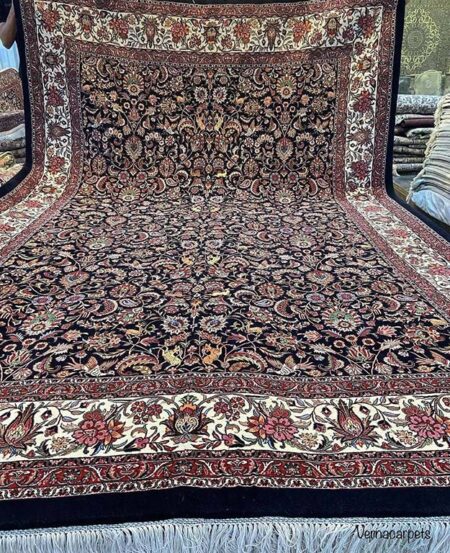
Senneh is the old name of the city of Sanandaj, the capital of Kurdistan province. Senneh rug is one of the urban style carpets of Kurdistan. These rugs are among the coarsely woven carpets. Senneh carpets are woven with Turkish or symmetrical knots.
The density of Senneh wool carpets is usually between 15 and 35 knots per 7 cm, which despite this low density, they are beautiful and high-quality carpets. Of course, in silk carpets, this density reaches more than 70. Sanandaj rugs are woven in a single-weft method, following the kilims and gabbehs that were woven in this city in the past. These carpets, like other Iranian rugs, are made of wool and cotton. Some of the designs used in Senneh carpets are Mahi-Herati, Bote-Jegheh, Gol-Farang, and ….
Unfortunately, today the weft used in the carpet is not very important. Other characteristics include the short and uniform pile and the use of twisted and twisted fibers. As usual, the finishing and shearing is done during weaving. The use of these fibers allows us to see the knots of the carpet when we look at the back of the carpet.
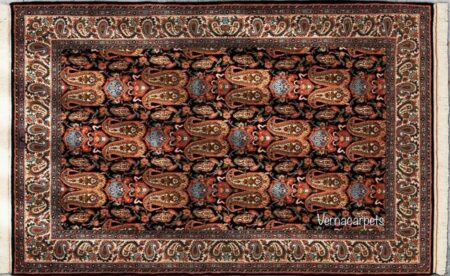
Carpets woven by Afshar nomads in Saqqez, Baneh, and Marivan are classified as nomadic carpets. Afshar nomads obtained their wool from their sheep, which had long, high-quality, and dark fibers. They used dark wool for the warp, which was highly durable and not dyed. Nomadic women sorted the wool and turned it into hand-spun wool, which they used in weaving carpets, kilims, and other handwoven items.
Also, for many years, Kurdish tribes have settled in the northeast of Iran between the cities of Quchan and Birjand in the provinces of Khorasan Razavi and North. These tribes were moved to this area by order of Shah Abbas Safavi during the reign of the Shah to protect the borders of Iran against the invasion of Turkmens. During these 300 years, the Kurds of Quchan or the Kurmanj tribes have imitated the designs of the neighboring Baluch and Turkmen units and have produced beautiful Kurdish carpets by adding various colors. At first glance, no one may notice the difference between the Kurdish rugs of Quchan and the Baluch rugs, but the important point is that Kurdish rugs are always woven with Turkish knots, while Baluch and Turkmen rugs are woven with Persian knots.
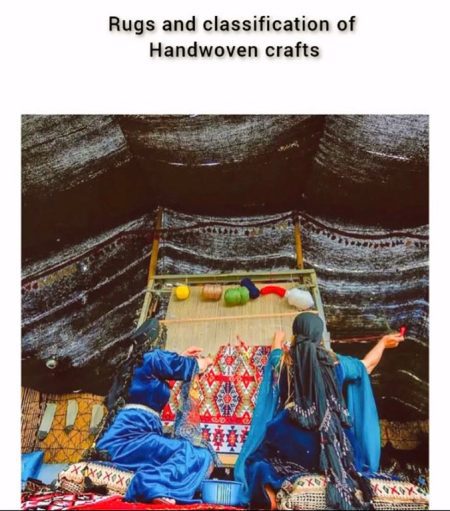
Kurdish rug
By looking at Kurdish rugs, you can gain a complete view of the geographical region, customs and culture of this region. These carpets well show the perseverance and stability of the zealous Kurdish people of Iran. Sanandaj and Bijar carpets have a better weave quality than other Kurdish rugs. For this reason, the price of Bijar and Senneh rugs is higher than the price of other Kurdish rugs. The value of Kurdish rugs depends on the quality of the weave, the type of wool and their materials, in addition to the place of weaving. If you love buying Kurdish rugs, you can contact the experts of Vernacarpets. They will help you make a safe and easy purchase.

Kurdish rug